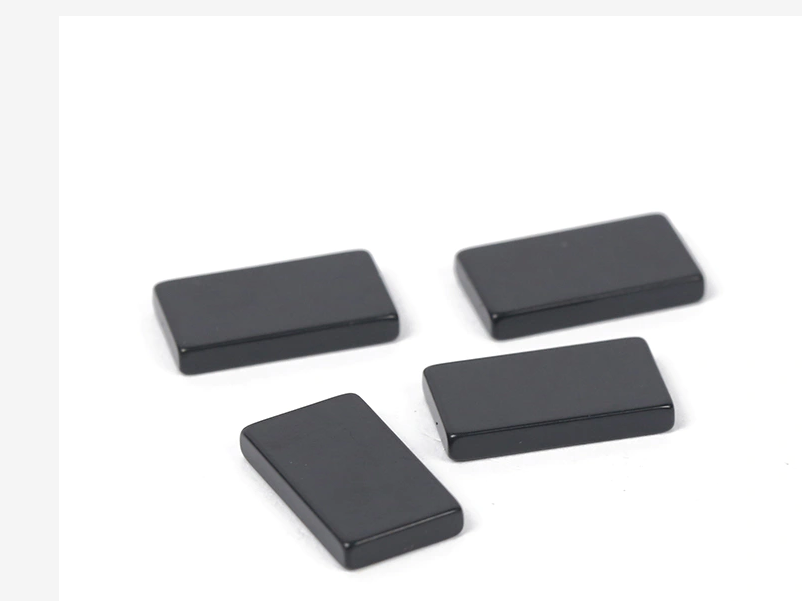
Alloy magnet: Also known as aluminum-nickel-cobalt magnet, it is made of aluminum, nickel, cobalt, iron and magnetic materials cast and sintered at 600℃.
Aluminium, nickel and cobalt are costlier than iron oxide and cobalt is scarce.
Alnico was one of the first magnets used in trumpets, such as trumpets in the 1950s and 1960s (known as tweeters).
Usually made of internal magnetic type horn (external magnetic type can also be used).
Disadvantages: small power, narrow frequency range, hard and very brittle, very inconvenient processing, the need for grinding or edM.
Iron oxide magnet (commonly known as iron oxide) : it is made of magnetic material powder and iron powder sintered at about 1200℃. Generally, it is made of external magnetic horn, which is cheap and has high property valence.
Its disadvantages: large volume, small power, narrow frequency range.
Nd-fe-b magnet: The nD-Fe-B material (rare earth) and nD-Ni-Co and other rare materials are made of high temperature sintering after electroplating. The performance of the ND-Fe-B magnet is far better than the iron oxide magnet. At present, the most used magnet on loudspeakers.
In the same volume magnetic strength than general iron oxide magnetic strength of 10 times more than.
Its features: With the same magnetic flux, it is small in size, large in power and wide in frequency range. Currently, such magnets are basically used in HiFi headphones.
Cons: Rare earths are widely used in high-tech industries (military, electronics, etc.), but their use has been tightly controlled by the government in recent years, and prices have skyrocketed.
Ii. Influence of magnets on the sound quality of speakers (earphones) (refers to the comparison of magnets with the same volume and voice coil) :
1) The better the magnet material is, the higher the magnetic flux density B will be, and the stronger the thrust acting on the sound film will be.
Magnetic flux density B (magnetic induction intensity) : the ratio of the magnetic field force F to the product IL of the current intensity I and the length L of a conducting wire in a magnetic field perpendicular to the direction of the magnetic field, is expressed as B=F/(I*L).
2) The higher the magnetic flux density B is, the higher the relative power is, and the higher the SPL sound pressure level (sensitivity) is.
Headset sensitivity: The sound pressure level (dB is the unit of sound pressure; the higher the sound pressure, the higher the volume) that can be emitted by the headset when sinusoidal waves of 1MW and 1khz are input to the headset. Therefore, the higher the general sensitivity, the smaller the impedance and the easier the headphones are to make sound.
For example, Sennheiser IE7 impedance: 16 ohms, sensitivity: 120dB, CX985 impedance: 32 ohms, sensitivity: 110dB, ordinary low-end walkman and mobile phone can only push the impedance: 32 ohms and the following earphones.
3) The higher the magnetic flux B density is, the lower the total quality factor Q value of the horn is.
Quality factor Q was a set of parameters which described the horn damping factor.
In TS parameter, Q value is divided into Qms, Qes and Qts. Qms is the damping of the mechanical system, reflecting the energy absorption and consumption in the movement of each part of the horn.
Qes is the damping of power system, which is mainly reflected in the consumption of electric energy by the dc resistance of voice coil.
Qts is the total damping, and the relation with the above two is Qts=Qms*Qes/(Qms+Qes).
4) The greater the magnetic flux density B, the better the transient state.
Transients can be understood as "fast response" to signals, and Qms is relatively high.
The headphones with good transient response should respond immediately when the signal comes, and stop abruptly when the signal stops, never dragging.
For example, especially in drum music and larger symphonies, the transition part from the lead to the ensemble is the most obvious.
More info about magnet, welcome to stay tuned. Zhongke magnet factory will bring you latest magnet news.

